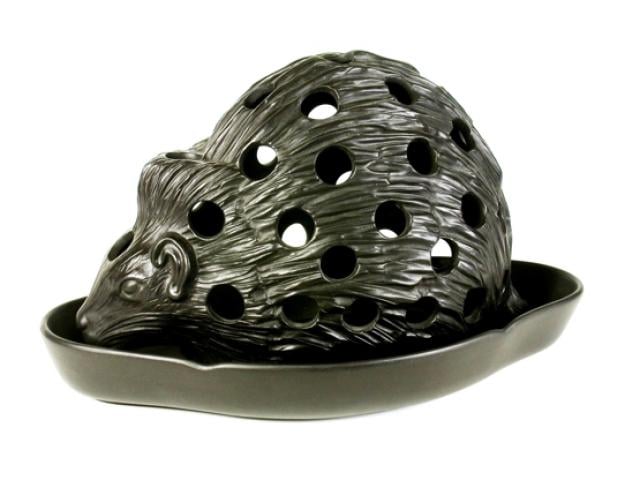Wedgwood and Nature: Hedgehog Bulb Pot and Stand
We know from surviving factory records that Josiah Wedgwood produced a wide range of flowerpots and root pots to appeal to all markets and tastes. The ornamental ware catalogues mention that ‘…there is a great variety, both in respect to pattern and colour; and the prices vary accordingly.’ Many ‘root’ pots were traditional in form while others had ‘novelty’ appeal.
Root, or bulb pots, were a popular product of the Wedgwood factory and complemented the rapidly growing interest in nature and gardens in the 18th century. Whilst the rich indulged their fantasies in ‘natural’ landscape gardens, such as those designed by English landscape gardener Capability Brown, the outdoors could be brought indoors to a wider audience with the clever use of flower vases and root pots.
The hedgehog bulb pot and stand has proved to be a popular and enduring novelty, with the factory firing records indicating that such items were in production in the early 1780s. At this time, they were quaintly described as ‘porkoipins for snodrops’ – porcupines for snowdrops - with the hollow bulb pot modelled in the form of a hedgehog, pierced with holes large enough to place a snowdrop bulb. The bulbs would nestle and grow within moss or soil held by the hedgehog’s body, and the rich black basalt body provided a dramatic contrast to the stark white of the flowers, whilst the green foliage formed the ‘bristles’ of the beast. The shallow tray held water to keep the arrangement fresh.
As with many of the ornamental items produced by Wedgwood, containers for cut and cultivated flowers satisfied a dual purpose. They provided a versatile and usable object as well as a standalone ornament of high quality.
